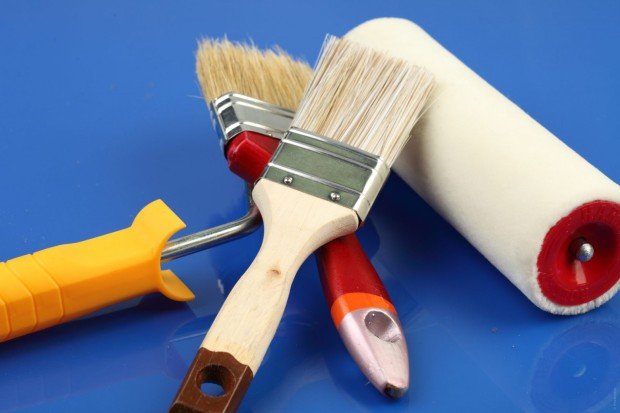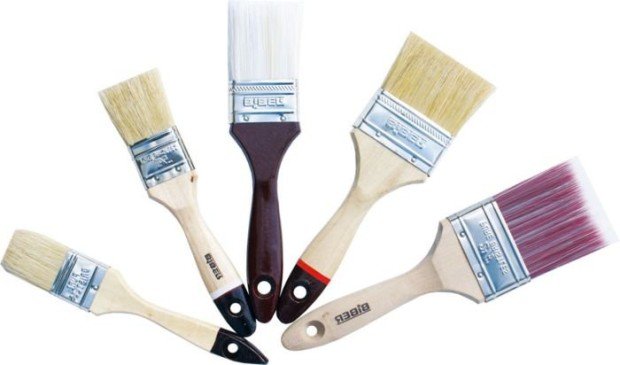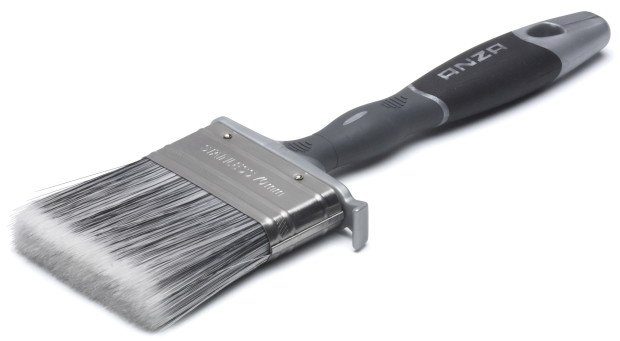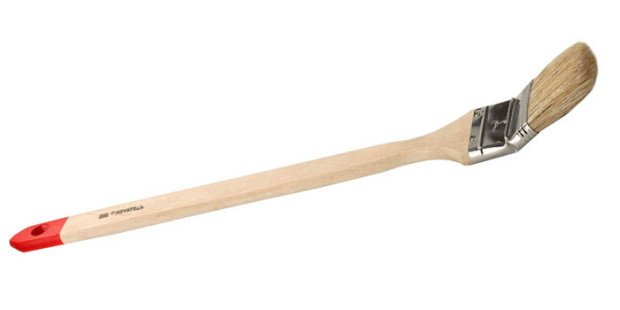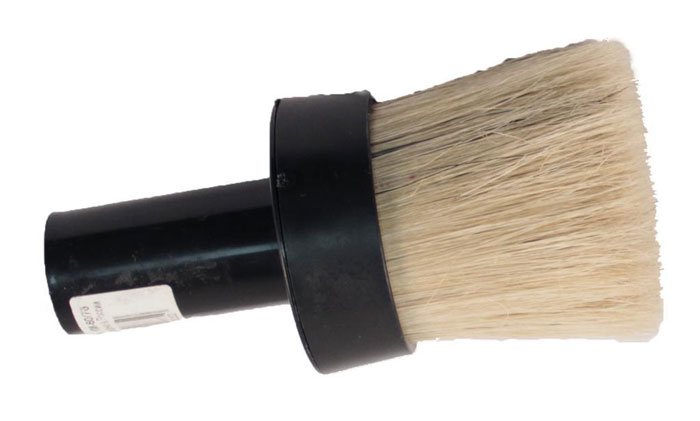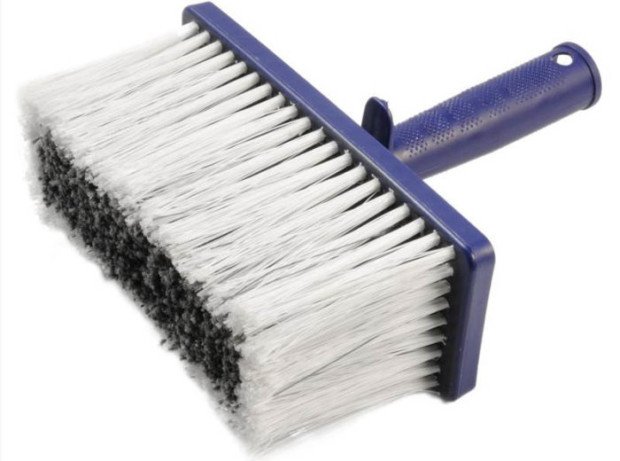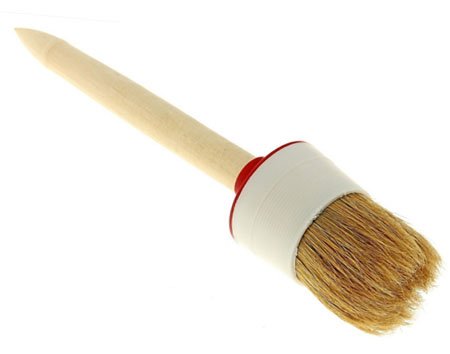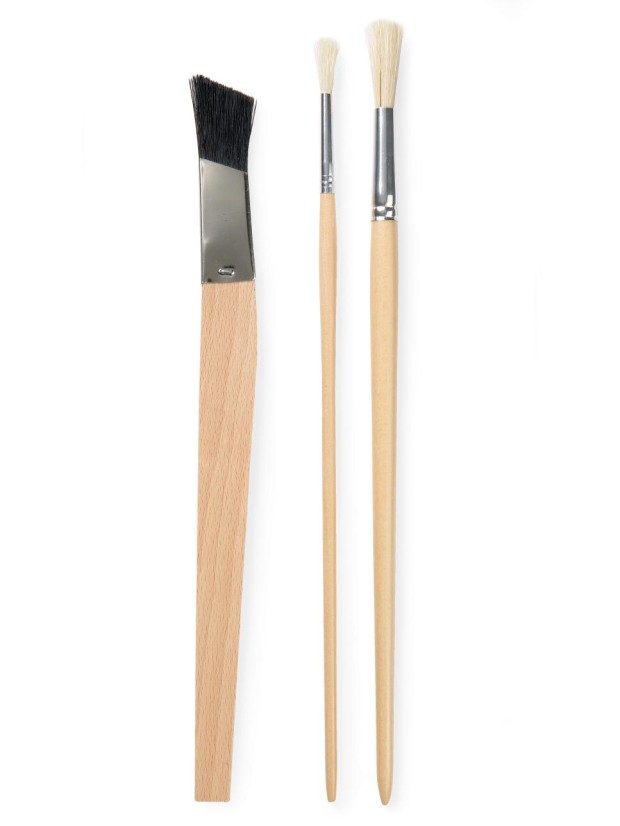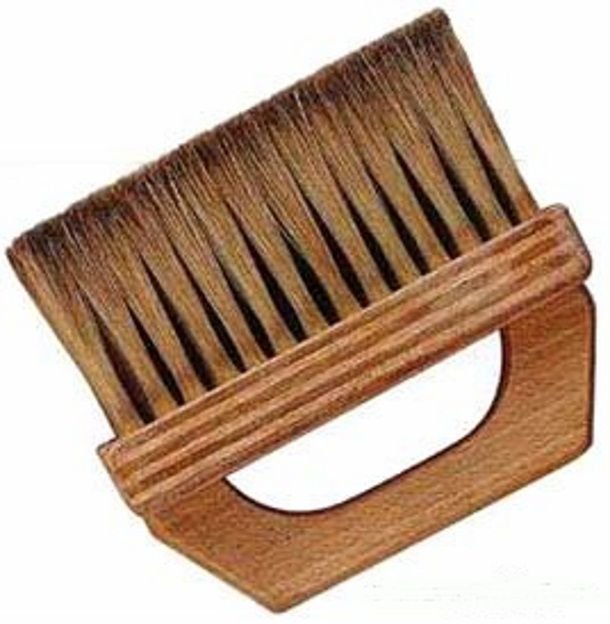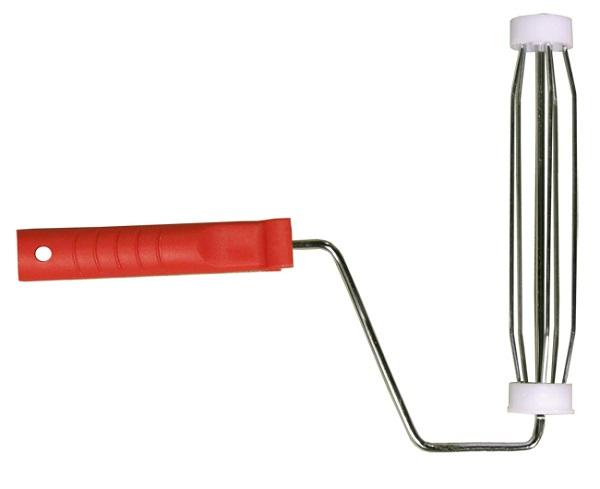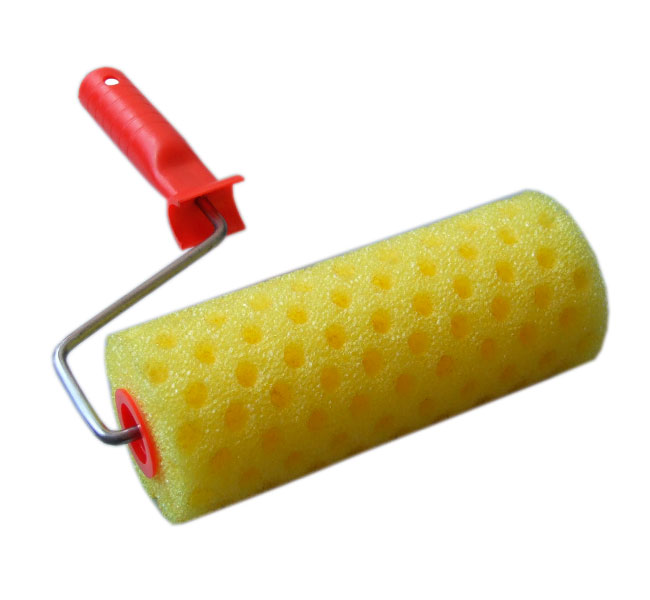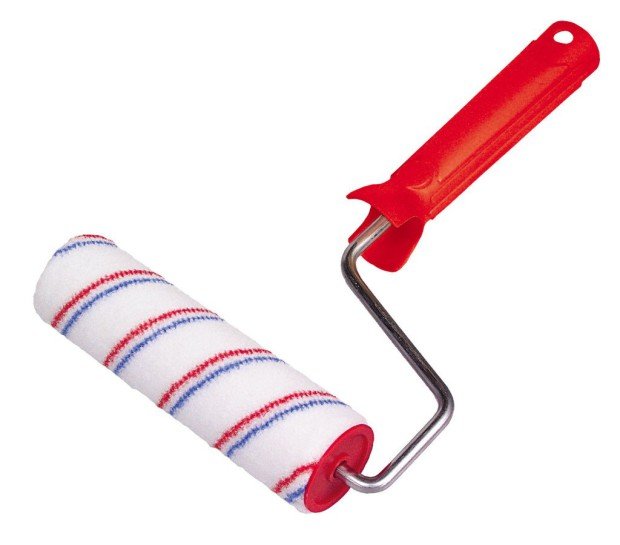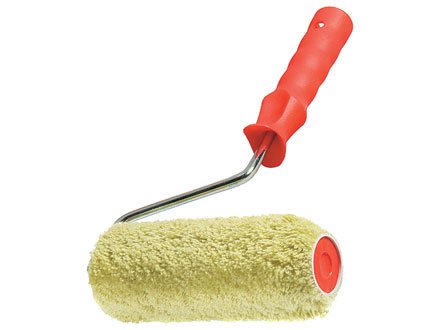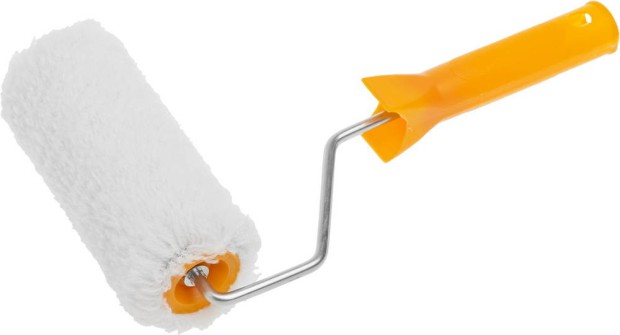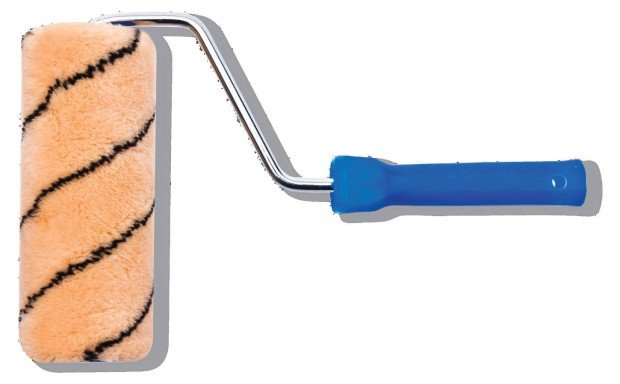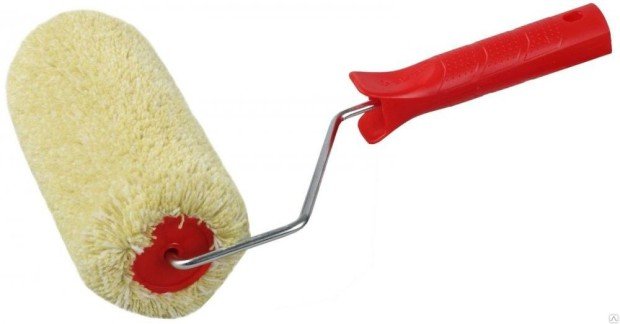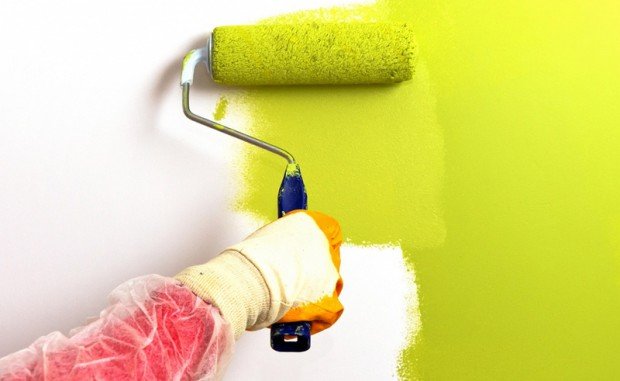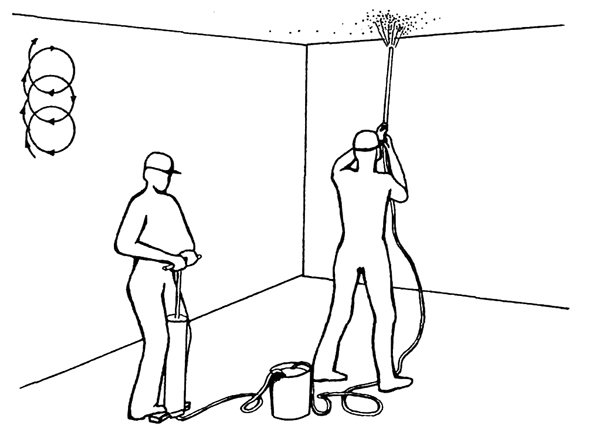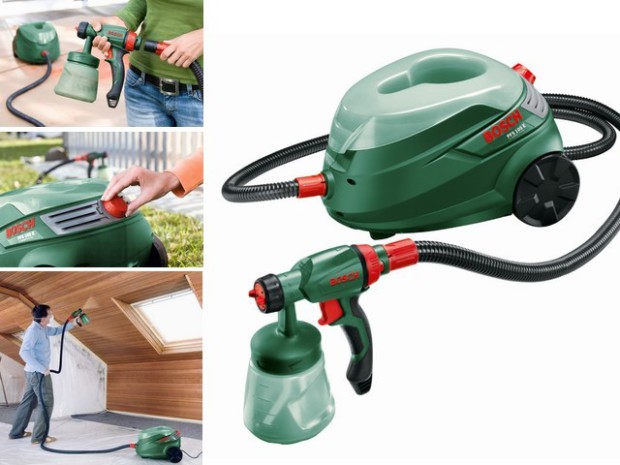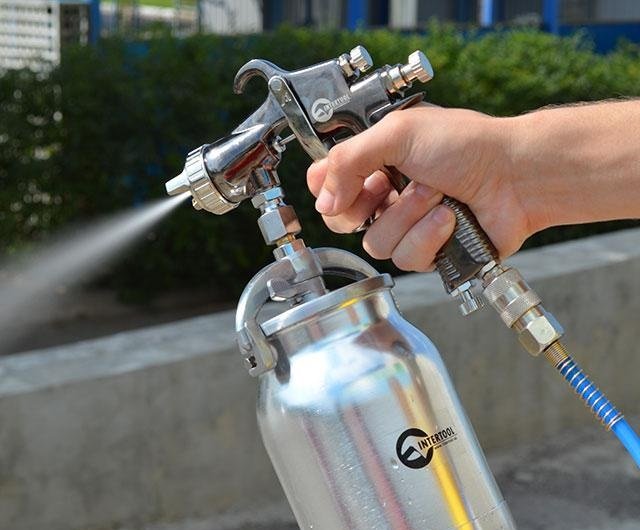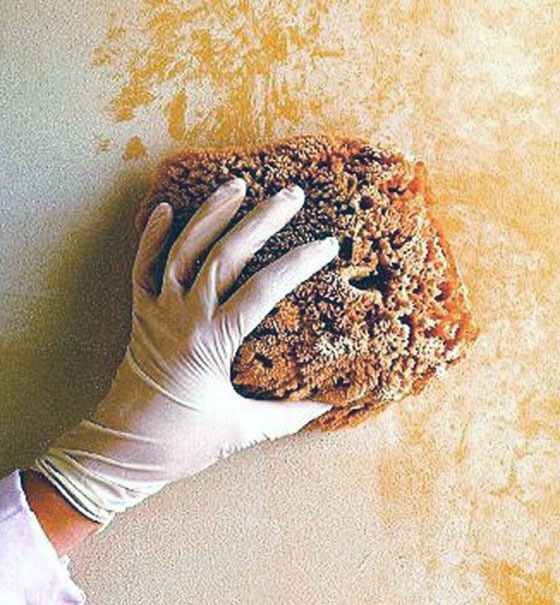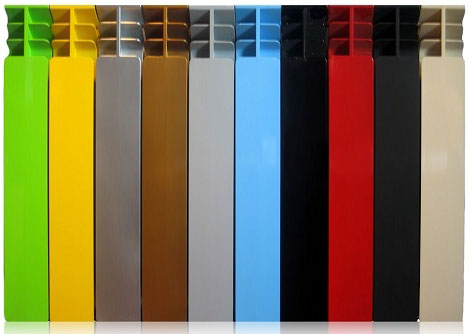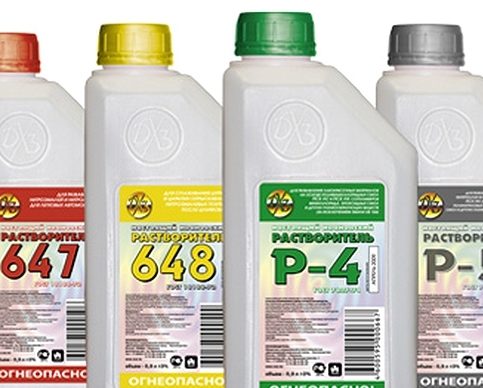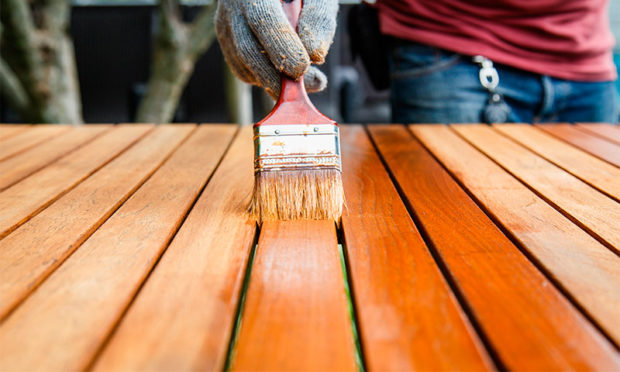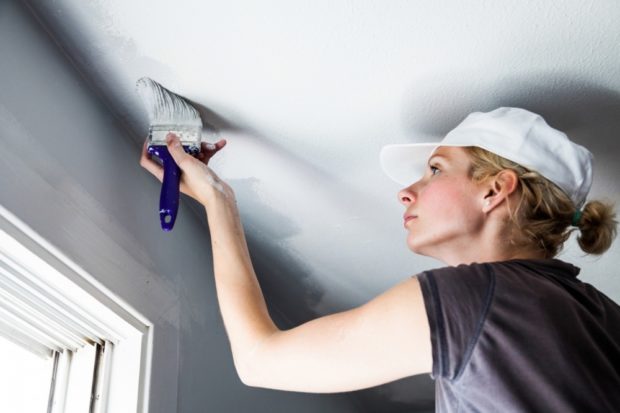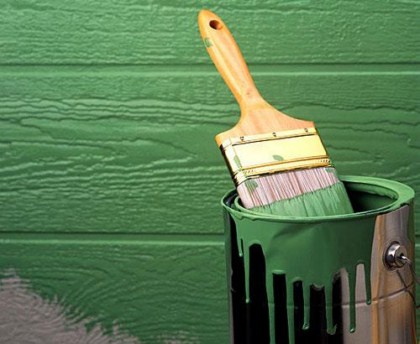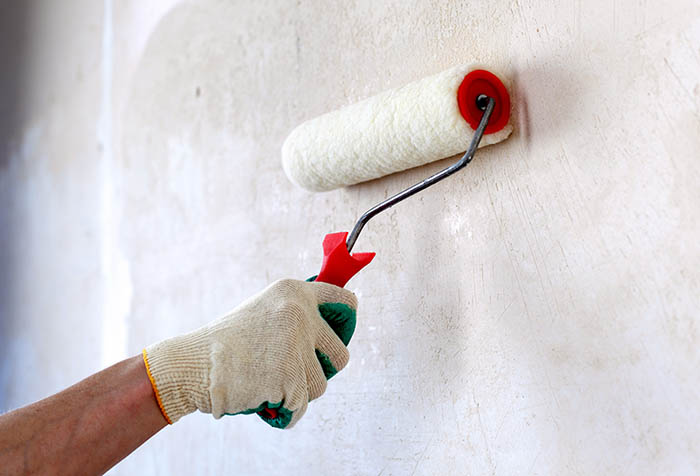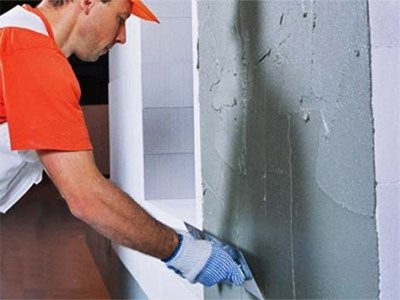5 tips for choosing a paint tool for painting walls and ceilings
Dyeing the wallsceilings facades and fences - It’s a simple matter, and each of us, at least once in his life, has tried himself as a house painter, so he understands how much the result depends on the chosen brush or roller. The appearance of air bubbles on a painted surface, adhesion of dropped bristles to it, sagging, streaks, stains, unpainted areas - all this is the result of improperly selected painting tools, while the paint itself can be very high quality and expensive. We will not throw money away - it’s better to spend a little time and figure out how to choose a paint tool for painting walls and ceilings, in which cases it is better to use a good old brush, and when to take on a roller or airbrush.
No. 1. Types of paint tools
For painting surfaces use a range of devices, ranging from spatulas to alignment to the stairs for better access to some places. Buckets are also used, drill, trays and paper tapes, but all these are tools used in other work. We will focus on paint toolswhich are used exclusively for painting surfaces:
- brushes;
- rollers;
- spray guns;
- other tools for hard-to-reach spots or for creating a raised surface (crumpled cloth, sponges, etc.).

No. 2. Paint brushes: types and basics of choice
The most traditional, familiar and popular tool for painting is, without a doubt, a brush. For different occasions and different paints and varnishes, completely different brushes are produced, which differ in bristle type, size and shape.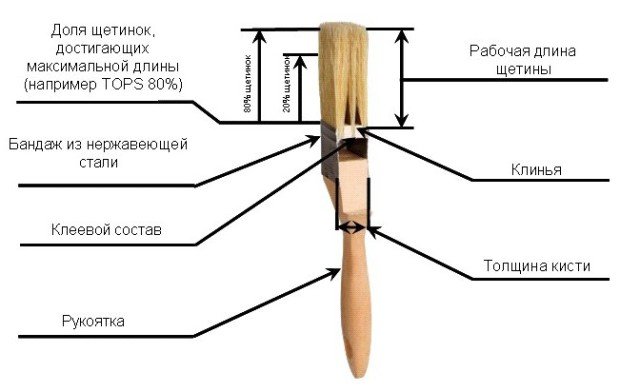
Stubble in brushes can be of different types:
- from natural fibers. Such brushes are quite hard and rough, hold paint well, apply it with a uniform layer. Natural brushes are suitable for oil and alkyd paints, enamels, they are better do not use with water-based paints;
- artificial fiberusually use nylon and polyester. You can give virtually any level of stiffness to the bristles, and high-quality brushes with artificial bristles cost a lot of money and can last a very long time. Such brushes, like natural ones, are suitable for oil and alkyd paints, and will be indispensable when working with latex paints, since they retain their original appearance regardless of the presence of water in the paint. Nylon brushes are recommended for use when staining. wood beam;
- mixed bristles type allows you to maintain the benefits of natural while increasing elasticity and wear resistance.

In form and purpose, these types of paint brushes are distinguished:
- flat or flute width from 25 to 100 mm - the most versatile tool. It is used for applying paint, enamel, varnish, drying oil to any surface, and sometimes for processing a painted surface in order to give it a glossy effect. For painting large surface areas, it is better to take brushes 75-100 mm wide, for finishing individual parts, painting baseboards and frames it is better to take brushes 30-60 mm wide cut at the corners, they are also suitable for painting corners;

- radiator brush differs from a flat small width and a curved elongated handle so that it is convenient to paint the most inaccessible places, for example, radiators. That is why the brush has such a name. It can also handle remote corners and sectional structures;

- fly brushes have a round shape, are made mainly of a mixture of natural and synthetic fibers. Pile length 100-180 mm, product diameter 60-65 mm. These large fluffy brushes are well suited for painting large enough surfaces, sometimes they are used for whitewashing. When working, the bristles can bend a little, but then return to their original state, and the craftsmen recommend tying the pile so that the short bristles do not deform, and the quality of work does not drop over time. Fly brushes can be used with telescopic rodsthanks to which it is possible to paint hard-to-reach spots;

- macklower It is used for applying paint on large surfaces, it allows 2.5 times faster than a fly brush to perform painting work, the quality of the painted surface is high. In shape, such brushes are round, oval and rectangular, the length of the pile does not exceed 100 mm, and the diameter or width is 120-170 mm. As a rule, such brushes have a short handle and synthetic bristles, but there are also options with a long handle and natural bristles on sale. Moklovitsa can be used for applying various kinds of paints, as well as for priming, applying wallpaper glue. Best of all, she shows herself when working with viscous and thick compositions;

- hand brushes They are small and round in shape, therefore they are more commonly known as round paint brushes. The diameter is from 26 to 54 mm, so they are convenient to use for painting window framespipes skirting boards and other small parts;

- panel brushes also round, but have an even smaller diameter (6-18 mm) and resemble paint brushes. They are used mainly for decorative work where high accuracy is important;

- trimming brush It has very stiff bristles and is used to treat already painted surfaces. With its help, you can get rid of any irregularities if they remain after using another paint tool.

Important pick brush with elastic bristles that do not fall out if pulled. The handle should be comfortable in your hand. The brush can be used repeatedly if, immediately after painting, wash it with solvent (usually use white spirit). Brushes are considered worn, in which the bristles have been erased by 60%, it is better to abandon them.
No. 3. Paint rollers: types and sizes
The paint roller is able to significantly reduce the time required for painting, it is convenient to use and is indispensable for painting large surface areas. Today it’s hard to imagine how you can paint a wall or ceiling without using a roller. In hard-to-reach places and when painting small parts and surfaces it is better to use a brush.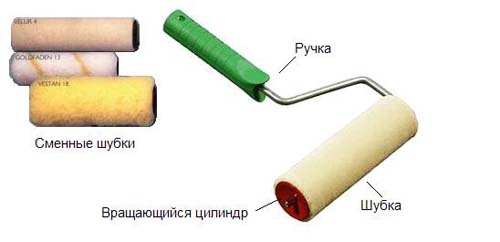
Roller design a little more complicated than the brush. It consists of a yoke (curved handle) and a tube, a rod to which a cylinder with a fixed fur coat is attached. The fur coat can be glued to it, fixed with plugs or fixed with thermosynthesis, i.e. as if welded. The design is lightweight and extremely easy to operate.
Separately, it is worth highlighting frame rollersin which the coat is not worn on a plastic cylinder, but on a wire frame, due to which the roller perfectly paints uneven surfaces.
The fur coat determines for which surfaces and with what materials the roller can be used. The smoother the surface to be painted, the less pile should be: for metal, plastic, wood, a roller with a pile up to 5 mm is suitable, for textured plaster - 15-20 mm or more.
By type of fur coat, there are rollers:
- foam well absorb paint, elastic, quickly recover. Used for applying water-based paints - solvents can corrode the material. The porous structure of foam rubber leads to the formation of bubbles on the surface, so now a short synthetic pile is applied to the material;

- polyamide rollers can be used with all types of paint, they are resistant to aggressive environments, absorb paint well. The length of the pile is from 8 to 20 mm, so you can paint with such rollers as smooth or rough surfaces;

- polyacrylic rollers very similar to polyamide, absorb and distribute paint well, have a pile of different lengths;

- polyester rollers cheap, they cope well with their main task, even if they are not durable. Used for applying acrylic and dispersion paints;

- velor rollers suitable for all types of paints, have low absorbency, so they do not cause problems with spraying. Used for painting smooth surfaces;

- fur rollers made from sheep’s wool, they can be applied to any composition, except for lime paints. They absorb and distribute paint well, but may leave fibers on the surface;

- rubber rollers are used to give the surface a certain relief. This group also includes pinch rollers for wallpaper.
Structural, textured, textured and embossed rollers Designed for decorating painted or plastered surfaces.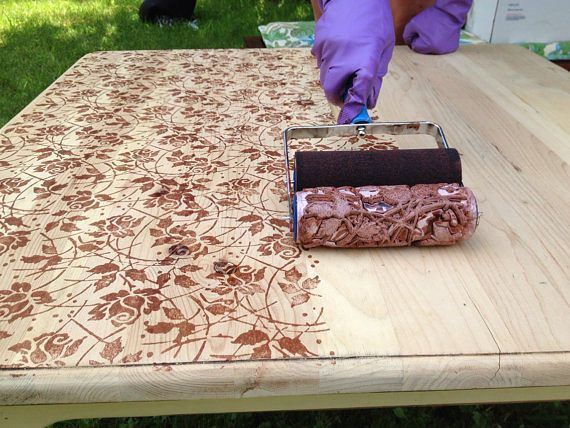
Separately worth mentioning corner paint rollers and other hard to reach places. They are somewhat reminiscent of pizza cutting knives and are a little wheel with a fur coat that rotates on a rod attached to the handle.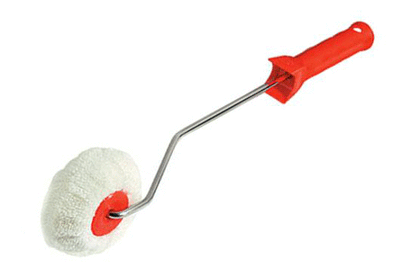
Is there some more scissor rollerswith which it is convenient to paint pipes and railings.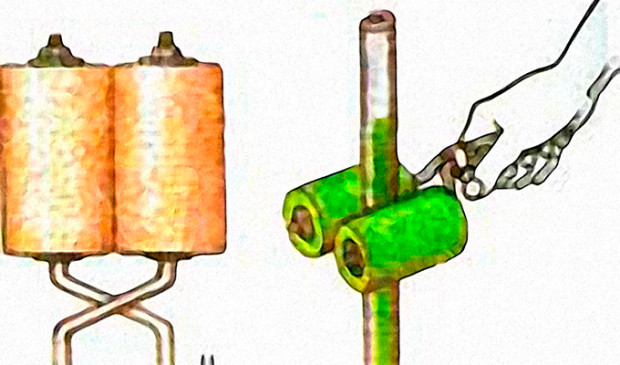
The scope of use of the roller is determined cylinder dimensions:
- rollers up to 180 mm long are considered small and are used for coloring hard-to-reach spots;
- rollers up to 250 mm long - the most universal and used most often;
- rollers longer than 250 mm - These are professional tools, they have a perfect bearing system, but due to the increased working surface they absorb a lot of paint and become heavy. You need skills to work with them.

Handle length may range from 30 to 50 cm or more, in some cases it is appropriate to use telescopic handlewhich can be extended up to 4 m.
When choosing a paint roller follow these simple rules:
- the handle should be comfortable, nothing should impede the rotation of the cylinder and the change of the coat, if this is provided for by the design;
- it is better to give preference to rollers in which the fur coat has no seams;
- if several colors are used for painting, it will be most convenient to stock up with several rollers so as not to waste time washing, drying and rolling out;
- if you hold the roller in the palm of your hand, it should not leave a lot of pile. Before applying paint to the wall, it is better to draw a roller on the surface of the tape.
Number 4. Spray guns: types and advantages
Spray guns or spray guns are used when it is necessary to paint a large area. They allow significantly save time to carry out painting work, create smooth coating without sagging and bristle residue. On the other hand, the accuracy when applying such devices is lower than when using brushes and rollers, but there was a solution - you can use masking tapes. Another disadvantage is the not very economical paint consumption.
The principle of operation for all spray guns is similar: the air flow coming under high pressure picks up particles of paint and evenly distributes them on the surface. According to the principle of air supply, spray guns are divided into the following types:
- tame. These are the simplest and most affordable devices, they do not have high performance and are often used in private construction. The design consists of a pump, a reservoir and a spray gun. Manual or foot drive - no electrics. Productivity - up to 250 m2 at one o'clock. The advantages of such designs include simplicity and reliability, low cost, no need for electricity, the presence of a long fishing rod, so you can paint the ceiling without a ladder. The disadvantages include low productivity, restrictions on the types of coatings used (manual spray guns cannot cope with dense paints and enamels) and the need to constantly press the lever, so it’s difficult to do without an assistant;

- electric. The simplest devices of this type spray paint not under the influence of air flow, but due to the pressure created by the pump. In this case, the quality of the coating will not be the highest, but the performance of such devices is higher than that of manual ones. Airborne electric spray guns are more expensive. The common advantages of this type of device include ease of control, compactness, the ability to work with any composition. The downside is the need for periodic maintenance. For household use, this is the best option;

- pneumatic. These units are intended for professional use, they work together with the receiver and compressor. The choice of these devices is very large, includes models with different levels of pressure, lower and upper flow. Pneumatic spray guns are high-performance units that allow you to optimally configure all the parameters of the application of paint and get high-quality coating.

No. 5. What else can be painted walls and ceilings?
Tools for painting only with rollers, brushes and spray guns are not limited. To perform painting work less often, but still used:
- special sponges or tampons Use for painting hard-to-reach spots (corners, radiators, window frames) or for decorating the surface. Conventional sponges are suitable for painting smooth surfaces, sponges with fiber are used to paint structural surfaces and to create an interesting relief on a freshly painted surface. Sponges are made of foam polymer or mohair; they can vary in shape and size. Sponges apply latex, acrylic and oil paints;

- textile. A piece of dense matter can also serve for applying paint, for this it will need to be twisted with a roller or crumpled. By dragging it along the surface of the wall, you can get interesting decorative effects and unusual patterns from the veins. For such purposes, use burlap, tulle, lace and gauze. Naturally, this method is not suitable for painting large surface areas.

When choosing a paint tool, remember that it depends on your decision what the ceiling / wall / fence will look like in the next few years.

